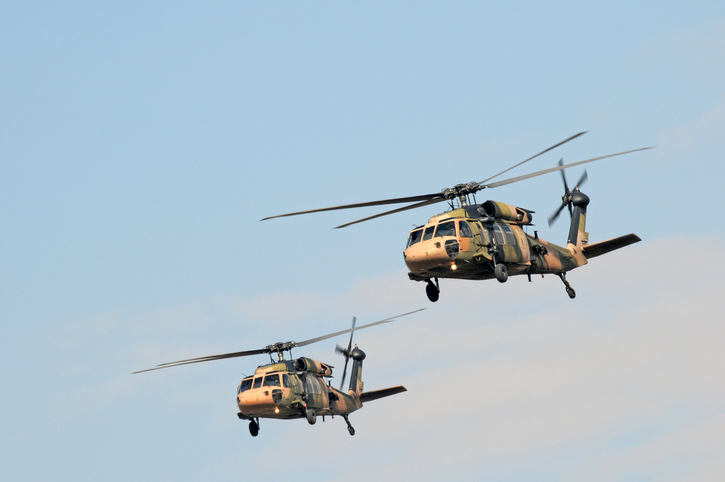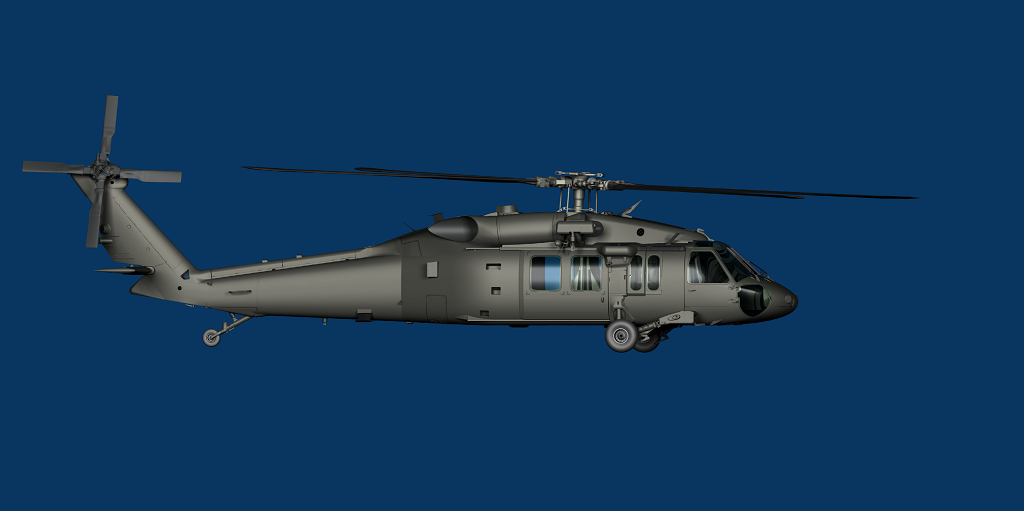Revealing the Sikorsky S 70: Innovations and Developments in Helicopter Engineering
Revealing the Sikorsky S 70: Innovations and Developments in Helicopter Engineering
Blog Article
Rotary-Wing Airplane Offering Superior Resilience and Accuracy Engineering
In the world of aviation, rotary-wing airplane have actually long been acknowledged for their distinct capabilities in various functional settings. As we check out the elaborate balance in between technology and integrity in rotary-wing airplane, it comes to be obvious that the convergence of cutting-edge modern technology and tried and tested style principles has set a brand-new requirement for performance and performance in the aerospace market.
Evolution of Rotary-Wing Modern Technology
Throughout the background of aeronautics, the development of rotary-wing innovation has been a testimony to consistent development and innovation in aerial engineering. From the very early days of vertical trip with basic layouts to the sophisticated helicopters and various other rotary-wing aircraft these days, the progress in this area has been exceptional.
In the early 1900s, leaders like Igor Sikorsky and Juan de la Cierva made significant strides in rotary-wing innovation. Sikorsky's VS-300 helicopter, initial flown in 1939, marked a zero hour in the development of sensible rotary-wing airplane. This success led the method for more innovations in vertical flight capacities.

Today, rotary-wing aircraft play vital functions in numerous fields, consisting of army procedures, emergency situation clinical solutions, police, and business transportation. The evolution of rotary-wing technology continues to push the borders of what is feasible in upright trip, making sure that these airplane stay important possessions in the air travel market.
Materials and Building Innovations
Demonstrating a fusion of sophisticated products and exact building methods, rotary-wing aircraft have actually undertaken substantial improvements in toughness and performance. One of the vital technologies in products used for rotary-wing airplane is the raising use of composite materials. These products, such as carbon fiber strengthened polymers, provide a high strength-to-weight ratio, boosting both the structural integrity and total performance of the aircraft. In addition, improvements in manufacturing procedures have permitted even more elaborate and precise construction of rotary-wing parts, adding to boosted aerodynamics and efficiency.
Furthermore, the combination of innovative coverings and surface area therapies has played a critical role in improving the durability of rotary-wing aircraft. These layers offer security versus corrosion, abrasion, and extreme weather condition problems, extending the life expectancy of the airplane and minimizing upkeep requirements.
In terms of building technologies, additive manufacturing, also referred to as 3D printing, has actually changed the manufacturing of complex components for rotary-wing aircraft. This technology permits fast prototyping and personalization, resulting in faster development cycles and decreased expenses. Generally, the constant advancement of products and building and construction strategies is driving the capacities and performance of rotary-wing aircraft to new heights.
Accuracy Trip Control Equipment

The combination of GPS technology additionally enhances the precision and reliability of these systems, permitting for accurate navigation, waypoint tracking, and automated trip control. sikorsky s 70. This level of accuracy not only boosts the safety of rotary-wing procedures but likewise improves general functional effectiveness and goal efficiency
In addition, the constant innovations in synthetic knowledge and artificial intelligence have assisted in the growth of autonomous trip capacities within Precision Flight Control Equipment. This enables rotary-wing aircraft to do intricate missions with unmatched accuracy and consistency, making them vital additional hints properties in a variety of applications, consisting of army operations, search and rescue goals, and aerial photography.
Durability in Challenging Atmospheres
In requiring functional settings, rotary-wing aircraft demonstrate outstanding strength and effectiveness, ensuring optimal performance under difficult environmental conditions. These aircraft are created to hold up against a large range of environmental factors, including extreme temperatures, high winds, and rough terrain, making them well-suited for various missions in diverse landscapes.
One key factor adding to the resilience of rotary-wing aircraft is their rugged construction. These airplanes are constructed making use of high-grade products and progressed design methods to enhance their structural integrity and integrity. In addition, elements such as rotor blades, engine systems, and landing gear are meticulously designed to withstand the stress and anxieties experienced during procedures in difficult atmospheres.
Furthermore, rotary-wing aircraft are furnished with innovative onboard systems that monitor efficiency metrics in real-time, permitting aggressive upkeep and very early detection of prospective problems - sikorsky s 70. This aggressive approach helps stop unexpected failures and ensures the ongoing airworthiness of the airplane sought after operational settings. In general, the resilience of rotary-wing aircraft in tough settings is a testimony to their exceptional engineering and style, making them important assets for different mission-critical operations
Maintenance and Integrity Specifications
The adherence to stringent upkeep and integrity requirements is paramount in making sure the optimal performance and safety and security of rotary-wing aircraft. Routine maintenance checks, carried out by qualified specialists, are vital to determine and resolve any type of possible issues prior to they endanger the aircraft's performance. These checks incorporate a comprehensive assessment of all critical elements, consisting of the engine, blades system, avionics, and hydraulic systems, to guarantee that they are in prime working problem.
Moreover, adherence to arranged upkeep periods based on producer standards is critical for upholding the aircraft's dependability. This positive strategy aids prevent unexpected malfunctions and makes sure that the airplane continues to be airworthy for its desired missions. Additionally, the implementation of robust reliability requirements, such as routine element testing and replacement based on established lifecycles, additionally improves the aircraft's dependability.
Final Thought

In final thought, the improvements in rotary-wing airplane innovation have resulted in exceptional sturdiness and precision engineering. With innovative products and building and construction strategies, in addition to accuracy flight control systems, these aircraft can run in tough settings with boosted dependability. The maintenance and reliability criteria make sure that these rotary-wing aircraft remain to perform at their ideal, making them crucial possessions for different industries.
Showing a combination of advanced materials and exact building techniques, rotary-wing aircraft have actually gone through substantial innovations in longevity and performance. One of the key advancements in materials made use of for rotary-wing aircraft is the increasing use of composite products.With careful interest to information and advanced technical combination, rotary-wing airplane have welcomed Precision Trip Control Solution as a cornerstone of their operational quality. In general, check out here the durability of rotary-wing airplane in challenging atmospheres is a testimony to their exceptional design and design, making them vital assets for different mission-critical procedures.
In Read More Here final thought, the innovations in rotary-wing airplane innovation have actually led to superior toughness and accuracy engineering.
Report this page